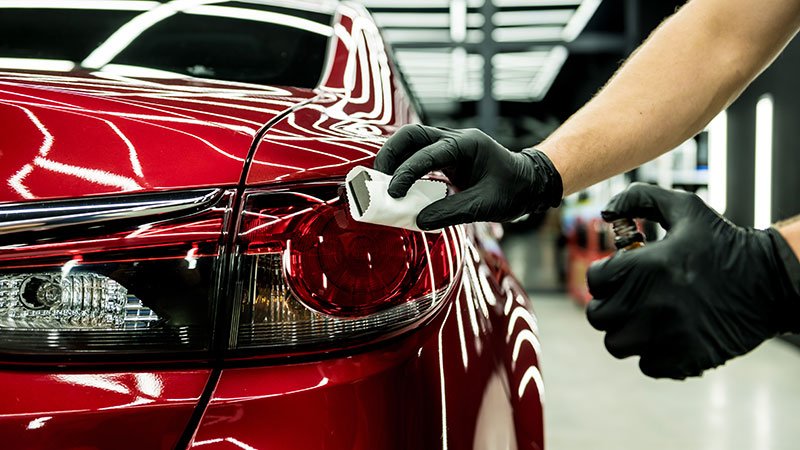Experience expert auto detailing for deep cleaning.
Experience expert auto detailing for deep cleaning.
Blog Article
A Comprehensive Overview to the Kinds of Ceramic Layer on the Market
Ceramic finishes have arised as a crucial remedy across numerous industries as a result of their one-of-a-kind residential properties and applications. From silica-based formulas understood for their effectiveness to hybrid alternatives that combine multiple benefits, the choices readily available can be frustrating. Recognizing the nuances of each kind, including their specific advantages and perfect use cases, is crucial for making notified decisions. As we discover the distinctive features and applications of these layers, the effects for performance and long life become progressively noticeable, questioning concerning which type could ideal suit your demands.
Recognizing Ceramic Coatings
Ceramic finishings are sophisticated protective remedies that have actually acquired popularity in numerous markets, specifically in automobile and aerospace applications. These coatings contain a fluid polymer that, when cured, creates a sturdy, hydrophobic layer on the surface area of the substratum. This layer supplies boosted resistance to environmental contaminants, UV radiation, and chemical exposure, therefore extending the life and visual appeal of the underlying product.
The basic element of ceramic coverings is silica, which adds to their firmness and durability. The application procedure usually entails surface prep work, application of the finish, and healing, which can be accomplished with warm or UV light. Once healed, ceramic layers exhibit remarkable bonding residential properties, enabling them to adhere highly to a selection of surfaces, consisting of steels, plastics, and glass.
Along with their protective functions, ceramic coverings also provide ease of upkeep. Their hydrophobic nature minimizes the adherence of dust and grime, making cleaning simpler and less regular. On the whole, the adoption of ceramic layers stands for a significant advancement in surface area protection innovation, providing both functional and aesthetic advantages across numerous fields.
Sorts Of Ceramic Coatings
Different kinds of ceramic coatings are readily available, each created to fulfill details performance demands and applications - Auto Detailing. The most typical types consist of:
Silica-based Coatings: These coatings largely contain silicon dioxide and are known for their toughness and chemical resistance. They are extensively used in vehicle and industrial applications.
Titanium Dioxide Coatings: Popular for their photocatalytic residential properties, titanium dioxide coverings are often applied in environments where self-cleaning and antifungal residential properties are preferable, such as in structure materials and automobile finishes.
Zirconia Coatings: Identified by their high-temperature stability and thermal resistance, zirconia coverings are utilized in applications such as turbine engines and high-performance auto components.
Alumina Coatings: Exhibiting exceptional firmness and thermal security, alumina coverings are frequently made use of in wear-resistant applications, including cutting devices and commercial equipment. - Paint Protection Film
Crossbreed Coatings: Combining the go to this web-site residential or commercial properties of numerous materials, crossbreed coatings use improved efficiency qualities, making them appropriate for distinct and requiring applications.
Each kind of ceramic covering serves distinctive purposes, allowing users to choose the most appropriate service based on certain ecological problems and performance needs.
Benefits of Ceramic Coatings
Ceramic layers, in certain, offer many advantages that make them significantly prominent among producers and consumers alike. These finishings are immune to scratches, chemicals, and UV rays, ensuring that the underlying surface area continues to be secured over time.
Along with resilience, ceramic layers supply superb hydrophobic buildings, permitting easy cleaning and upkeep. This water-repellent nature reduces the adherence of dust, grime, and other impurities, which can lengthen the aesthetic allure and performance of the surface area. Ceramic coverings can considerably boost thermal resistance, making them excellent for applications that sustain high temperature levels.

Application Process
When applying ceramic finishes, a thorough strategy is important to accomplish ideal outcomes. The application procedure normally starts with detailed surface preparation. This includes washing, decontaminating, and brightening the surface area to get rid of all pollutants, consisting of dirt, grease, and prior waxes or sealants. A tidy surface area makes sure proper attachment of the coating.
Once the surface is prepped, the next action is to apply the ceramic coating. This can be done making use of an applicator pad or a microfiber fabric, making sure even coverage. It is vital to function in little sections to maintain control and stop premature treating. The coating needs to be applied in slim layers, as thicker applications can result in uneven finishes.
After application, the finishing needs a details curing time, commonly varying from a few hours to a full day, depending upon the product. During this time, it is essential to prevent direct exposure to wetness or pollutants. Finally, a mild buffing may be needed after curing to improve the gloss and remove any high places. Adhering to these steps vigilantly will take full advantage of the performance and long life of the ceramic covering, providing a durable protective layer for the surface.
Maintenance and Long Life
To make see this here sure the long life and effectiveness of a ceramic finish, routine upkeep is important. Ceramic coatings, understood for their durability and protective top qualities, read review need specific treatment routines to optimize their life expectancy and performance.
Along with regular cleaning, periodic assessments are essential. Try to find signs of wear or damages, such as hydrophobic homes lessening or surface imperfections. If needed, a light gloss might be put on rejuvenate the finishing without removing it away.
Furthermore, the application of a booster spray can boost the coating's hydrophobic effects and restore its gloss. This is especially valuable for coverings that have remained in usage for an extensive duration. Ultimately, by adhering to these upkeep techniques, one can substantially prolong the life of a ceramic layer, ensuring that it remains to supply optimum protection against ecological aspects and keep the visual appeal of the automobile.
Conclusion

Report this page